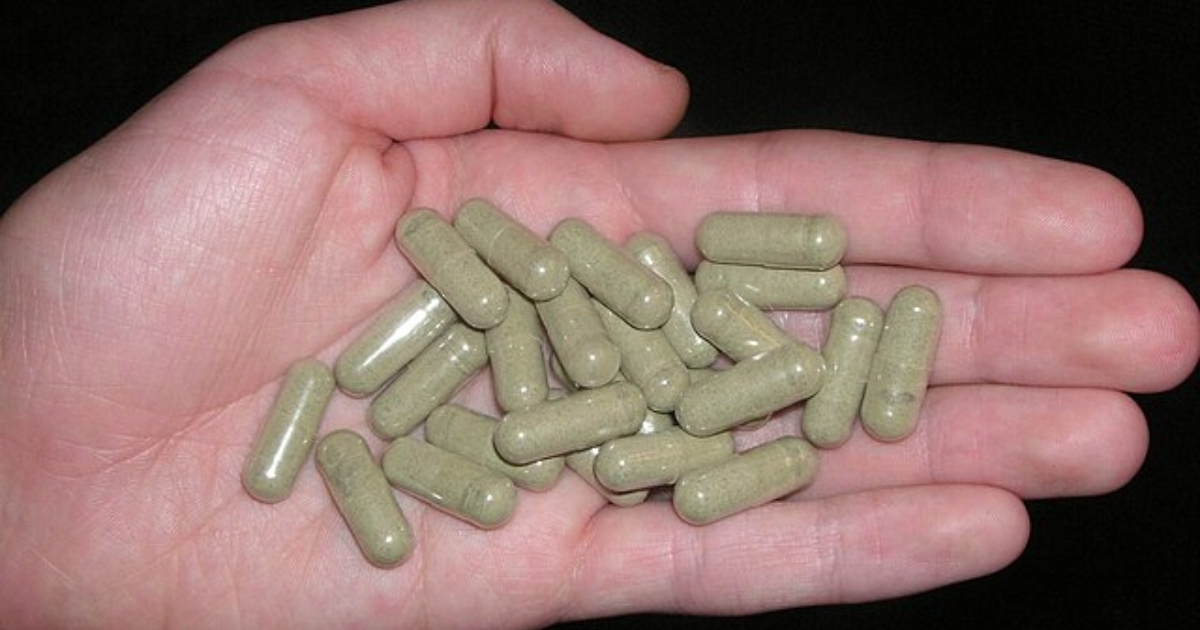What Is Vaping?
Vaping refers to the act of inhaling and exhaling nicotine vapor produced by an electronic device such as an electronic cigarette, vaporizer, or vape pen. These are relatively new devices that allow the user to consume nicotine.
The main reason people vape is that it’s perceived to be safer than traditional forms of nicotine such as cigarettes. Others enjoy the flavors and the activity itself. And some even use vaping products to consume substances like cannabis.
However, emerging research suggests there are health risks to vaping. This has led people to look into ways to quit vaping.
Usage Statistics:
- In 2021, the CDC estimated that approximately 55 million adults worldwide are current e-cigarette users.
- The rise of vaping has been particularly pronounced among teenagers. In the U.S., the National Youth Tobacco Survey reported in 2019 that over 27.5% of high school students had used an e-cigarette in the past 30 days.
- Use among adults varies by country. In the United States, around 3.2% of adults were estimated to be current e-cigarette users in 2018, according to the Centers for Disease Control and Prevention (CDC).
- One in five Americans ages 18 to 29 use vape products, compared with 16% of those ages 30 to 64, and fewer than 0.5% among those 65 and older.
Modern e-cigarettes were invented in 2003 by Chinese pharmacist Hon Lik. Vaping products became popular globally in the late 2000s and early 2010s as an alternative to smoking, initially marketed as a safer option or as a cessation tool.
The FDA warns that while vaping products may be legal, the ingredients in vapes are still unsafe. If you vape regularly, you should consider quitting.
How Much Nicotine Is in Vapes?
One reason people find it hard to quit vaping is that vaping products deliver much higher amounts of nicotine.
A traditional cigarette delivers 0.5 to 15.4 milligrams in every pull; an e-cigarette delivers 6 to 28 milligrams. Moreover, one vape pod delivers as much nicotine as 18 to 20 cigarettes.
Here is how some other more traditional tobacco-based products stack up:
- Chewing Tobacco: Around 6-25 mg of nicotine per serving
- Snuff: Varies, but can be around 12-17 mg per gram
- Nicotine Gum: 2 or 4 mg per piece
- Cigars: Between 5 to 20 mg per piece
- Pipes: Between 20-40 mg of nicotine per pipe
If you or a friend are trying to quit vaping and have been unsuccessful, consider substance abuse treatment.
Get confidential help from our addiction treatment specialists in Orange County. Call to join our rehab program today!
Call 866-881-1184Is Vaping Dangerous?
Vaping is a subject of ongoing research, and while it is generally considered to be less harmful than traditional cigarette smoking, it’s not without risks.
Here are some reasons to consider quitting vaping:
Cardiovascular Issues
Vaping devices typically consist of a battery, a heating element, and a liquid reservoir that contains a solution of propylene glycol or vegetable glycerin, flavorings, and often nicotine, though nicotine-free solutions are also available.
Some studies indicate these ingredients can irritate the respiratory tract. Additionally, some flavored e-liquids contain diacetyl, a chemical associated with a severe lung disease called bronchiolitis obliterans, also known as “popcorn lung.”
Nicotine also has adverse effects on cardiovascular health, leading to increased heart rate and blood pressure. Over time, this can contribute to a higher risk of heart disease. According to UnityPoint Health, people who vape have a 56 percent higher chance of heart attack and are 30 percent more likely to suffer a stroke.
Oral Health Problems
Vaping can negatively affect oral health. The vapor causes your mouth and gums to dry out, resulting in dry mouth (xerostomia). This raises your risk for issues like gum disease, tooth decay, and even tooth loss in some cases. The aerosols in e-cigarettes can also contribute to bacterial buildup.
Negative Impacts During Pregnancy
According ot the CDC, nicotine is harmful during pregnancy, as it can affect fetal development, leading to low birth weight, premature birth, and other complications. Though not specific to vaping, any nicotine exposure during pregnancy is risky.
How to Quit Vaping
Quitting vaping can be a challenging endeavor, especially considering the addictive nature of nicotine. If you are unable to quit vaping “cold turkey,” gradually reducing your nicotine intake can make the quitting process easier to manage.
Here are some tips to consider if you are looking to quit vaping:
- Set a Quit Date: Choose a specific date in the near future to quit vaping and commit to quitting on that day.
- Identify Triggers: Recognize the situations, feelings, or activities that trigger your urge to vape and find healthier alternatives or distractions.
- Get Support: Seek support from friends, family, or support groups. You’re more likely to succeed with a good support system.
- Consult a Healthcare Provider: They can offer tailored advice, and may also prescribe medication or nicotine replacement therapies that could help.
- Stay Active: Exercise can help reduce stress and the urge to vape.
- Reward Yourself: Create a reward system for reaching certain milestones (e.g., one week, one month, etc.) without vaping.
- Keep Track: Maintain a journal where you track your progress, cravings, and triggers. This can help you better understand your behavior and devise strategies to avoid vaping.
Products That Can Help You Quit Vaping
Nicotine Replacement Therapy (NRT): Options include nicotine gum, patches, lozenges, inhalers, and nasal sprays. These can help relieve withdrawal symptoms.
Prescription Medications: Drugs like varenicline (Chantix) and bupropion (Zyban) are non-nicotine medications that can aid in smoking cessation, and may also be useful for quitting vaping.
Mobile Apps and Online Resources: There are various apps and websites designed to help people quit vaping. They can offer personalized plans, progress tracking, and community support.
Looking for quality substance abuse treatment that’s also affordable? South Coast accepts most major insurance providers. Get a free insurance benefits check now.
Check Your CoverageNicotine Addiction Treatment at South Coast Behavioral Health
For those struggling with nicotine addiction, South Coast Behavioral Health offers compassionate and affordable addiction treatment. If you are ready to quit smoking, using tobacco products, or stop vaping, we can help. We can help you make a quitting plan and get through nicotine withdrawals.
The first step is going through a medical detox. Our medical detox program in California is staffed by caring and compassionate professionals who can provide you with medications to manage your withdrawal symptoms.
At South Coast, we take pride in offering care that is closely tailored to specific issues. To that end, we offer gender-specific detox programs, with medical detox for men in Irvine, CA, and medical detox for women in Huntington Beach, CA.
After detoxing, proper treatment can begin.
Treatment for substance abuse takes place along an entire spectrum of care. Along that entire spectrum are various behavioral therapies, support groups, and the use of medically-assisted treatment (MAT).
These levels of treatment are, in order, as follows:
Residential Treatment in California
After completing medical detox, you’ll move to inpatient treatment in Orange County California. There, you’ll receive medically-assisted treatment and dual diagnosis treatment to deal with any cravings or co-occurring mental health issues you may be battling. We also offer residential treatment facilities in Costa Mesa, Irvine, and Huntington Beach for those who desire gender-specific treatment. There, patients get round-the-clock medical attention and monitoring while living at the facility full-time.
In addition to individual and group counseling and medication management, you’ll also have access to leisure activities and family support services.
Partial Hospitalization in California
Most clients start substance abuse treatment with South Coast in our residential treatment program. After completing that, many desire something that still provides structure and support, but with extra space and time to oneself. For that, we offer Partial Hospitalization in Newport Beach.
A step down from inpatient care but with more structure than conventional outpatient programs, partial hospitalization offers a good balance for those looking to ease back into normal life. Clients can receive care five to seven days a week for several hours each day, returning to their homes in the evening.
This way, they can recover without putting their daily lives completely on hold, receiving intense therapeutic interventions like group and individual therapy, skills development, and medication management as necessary.
Intensive Outpatient Treatment in California
For those leaving inpatient residential treatment or partial hospitalization, intensive outpatient programs (IOP) are yet another gradual step forward on the road to recovery.
With a focus on group therapy, individual counseling, and education, clients undergoing Intensive Outpatient Treatment in Newport Beach can meet three to five days a week. Each session lasts three hours.
This level of care requires the least amount of attendance at a facility.
Get Started Today
Smoking cessation is possible. If you or a loved one are struggling with substance addiction but wonder how long addiction counseling takes or have other questions, call us at 866-881-1184. Our highly qualified staff will be happy to help give you an idea of what to expect from your addiction recovery timeline, help verify your insurance, and assist with any other questions you may have. Your chances of quitting are better when you have a quitting plan for nicotine withdrawals.
REFERENCES:
- https://www.ncbi.nlm.nih.gov/books/NBK507191/
- https://www.ncbi.nlm.nih.gov/pmc/articles/PMC9865633/
- https://www.ncbi.nlm.nih.gov/pmc/articles/PMC6887563/
- https://www.unitypoint.org/news-and-articles/is-vaping-bad-for-your-heart
- https://asm.org/Press-Releases/2022/Feb-2022/Evidence-Grows-for-Vaping-s-Role-in-Gum-Disease
- https://www.cdc.gov/reproductivehealth/maternalinfanthealth/substance-abuse/e-cigarettes-pregnancy.htm
- https://www.ncbi.nlm.nih.gov/pmc/articles/PMC2528204/
- https://www.ncbi.nlm.nih.gov/pmc/articles/PMC8425133/
- https://www.cdc.gov/tobacco/data_statistics/surveys/nyts/index.htm
- https://www.fda.gov/news-events/rumor-control/facts-about-e-cigarettes










